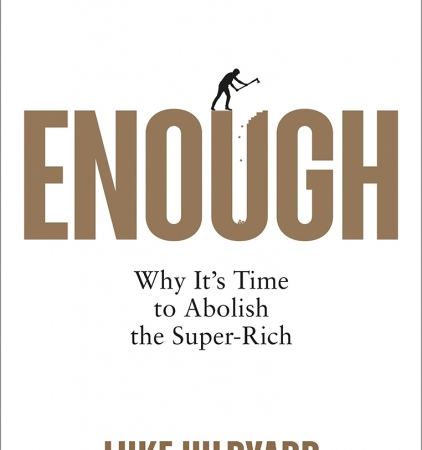GAZA

“No amount of medical care could ever compensate for the damage being inflicted here”
Mark Pearlmutter and Feroze Sidhwa give an eyewitness account from Gaza.
On March 25 the two of us, an orthopaedic surgeon and a trauma surgeon, travelled to the Gaza Strip to work at Gaza European Hospital. We were immediately overwhelmed by the overflowing sewage and the distinct smell of gunpowder in the air. We made the short journey from the Rafah crossing to Khan Younis, where Gaza European Hospital stands as one of the last remaining semi-functional hospitals for the 2.5 million human beings – half of them children – in the Gaza Strip. As humanitarian surgeons we thought we had seen all manner of cruelty in the world, but neither one of us has ever experienced anything like what we found when we arrived in Gaza.
We exited the van into a sea of children, all shorter and thinner than they ought to have been. Even over their screams of joy at meeting new foreigners, the snowmobile-like hum of Israeli drones could be heard overhead. That background noise is a constant reminder that violence and death can rain down on anyone at any time in this besieged and ransacked territory.
Our limited sleep is constantly interrupted by explosions that shake the hospital’s walls and pop our ears, even well after the United Nations Security Council declared a ceasefire must be implemented. When warplanes scream overhead everyone braces for a particularly loud and powerful explosion. The timing of these explosions always coincides with iftar, when families in this overwhelmingly Muslim county break the daily fast of Ramadan and are most vulnerable.
We walked through the wards and immediately found evidence of horrifying violence deliberately directed at civilians and even children. A three-year-old boy shot in the head, a 12-year-old girl shot through the chest, an ICU nurse shot through the abdomen, all by some of the best-trained marksmen in the world. Every square inch of the hospital’s floor is taken up with makeshift tents where displaced families live. They are the lucky several hundred who get to live indoors, unlike the tens of thousands sheltering outside on the hospital’s grounds.
As we got to work we were shocked by the violence inflicted on people. Incredibly powerful explosives ripped apart rock, floors, and walls and threw them through human bodies, penetrating skin with waves of dirt and debris. With the environment literally embedded in our patients’ bodies we have found infection control to be impossible. No amount of medical care could ever compensate for the damage being inflicted here.
As humanitarian trauma surgeons we have both seen incredible suffering. Collectively we were present at Ground Zero on 9/11, Hurricane Katrina, and the 2010 earthquake in Haiti on the first day of these disasters. We have worked in the deprivation of southern Zimbabwe and the horrors of both the war in Ukraine and attended primary trauma services to those injured in the Boston Marathon. Together we have worked on more than 40 surgical missions in developing countries on three continents in our combined 57 years of volunteering. This long experience taught us that there was no greater pain as a humanitarian surgeon than being unable to provide needed care to a patient.
But that was before coming to Gaza. Now we know the pain of being unable to properly treat a child who will slowly die, but also alone, because she is the only surviving member of an entire extended family. We have not had the heart to tell these children how their families died: burnt until they resembled blistered hotdogs more than human beings, shredded to pieces such that they can only be buried in mass graves, or simply entombed in their former apartment buildings to die slowly of asphyxia and sepsis.
The United States has heavily funded and overwhelmingly armed what is called “the occupation” of Palestine, but the term is misleading. Israel’s first president, Chaim Weizmann, declared that the existence of the Palestinians was simply “a matter of no consequence.” Thirty years later, Israeli defence minister Moshe Dayan told the Israeli cabinet that the Palestinians “would continue to live like dogs… and we will see where this process leads.”
Now we know: this is where it leads. It leads to Gaza European Hospital, and to two trauma surgeons realizing that the blood on the floor of the trauma bay and the operating room is dripping from our own hands, as we provide the crucial funding, weapons, and diplomatic support for a genocidal assault on a helpless population.
The two of us continue to hope against hope that American politicians, and especially President Biden, will abandon their support for Israel’s war on the Palestinians. If they do not, then we have learned nothing from the history of the past hundred years. Voltaire quipped that “no snowflake feels responsible for the avalanche”, but we as Americans must acknowledge that we are responsible for this crime against humanity that is unfolding in front of the entire world.
Israel has dropped so much American ordinance on Gaza that it now exceeds the explosive force of the atomic bomb that destroyed Hiroshima. More children have been killed in Gaza than were killed in all war zones in the entire world in the past four years. No conflict of any size in history has ever been this deadly to journalists, healthcare workers, or paramedics. Indeed, we and our entire team live in constant fear that Israel will attack this hospital directly, as it has with so many others.
We came to Gaza as two individual snowflakes trying to stop this avalanche of death and horror, and yet we also feel responsible for it. We urge anyone who reads this to publicly oppose sending weapons to Israel as long as this genocide continues, until the Israeli siege of Gaza is lifted, and until an end to the occupation can be negotiated.
Mark Pearlmutter, MD, FACS is an orthopaedics hand surgery specialist. Feroze Sidhwa, MD, MPH, FACS is a trauma, acute care, general surgeon, neurocritical care intensivist.
Image: Damage following an Israeli airstrike on the El-Remal aera in Gaza City on October 9, 2023. Source; Correspondence with Wiki Palestine (Q117834684). Author: Wafa (Q2915969) in contract with a local company (APAimages), licensed under the Creative Commons Attribution-Share Alike 3.0 Unported license.



.jpg?ext=.jpg) The community guide features a rendering of TerraPower's Natrium project (Image: DOE)
The community guide features a rendering of TerraPower's Natrium project (Image: DOE)